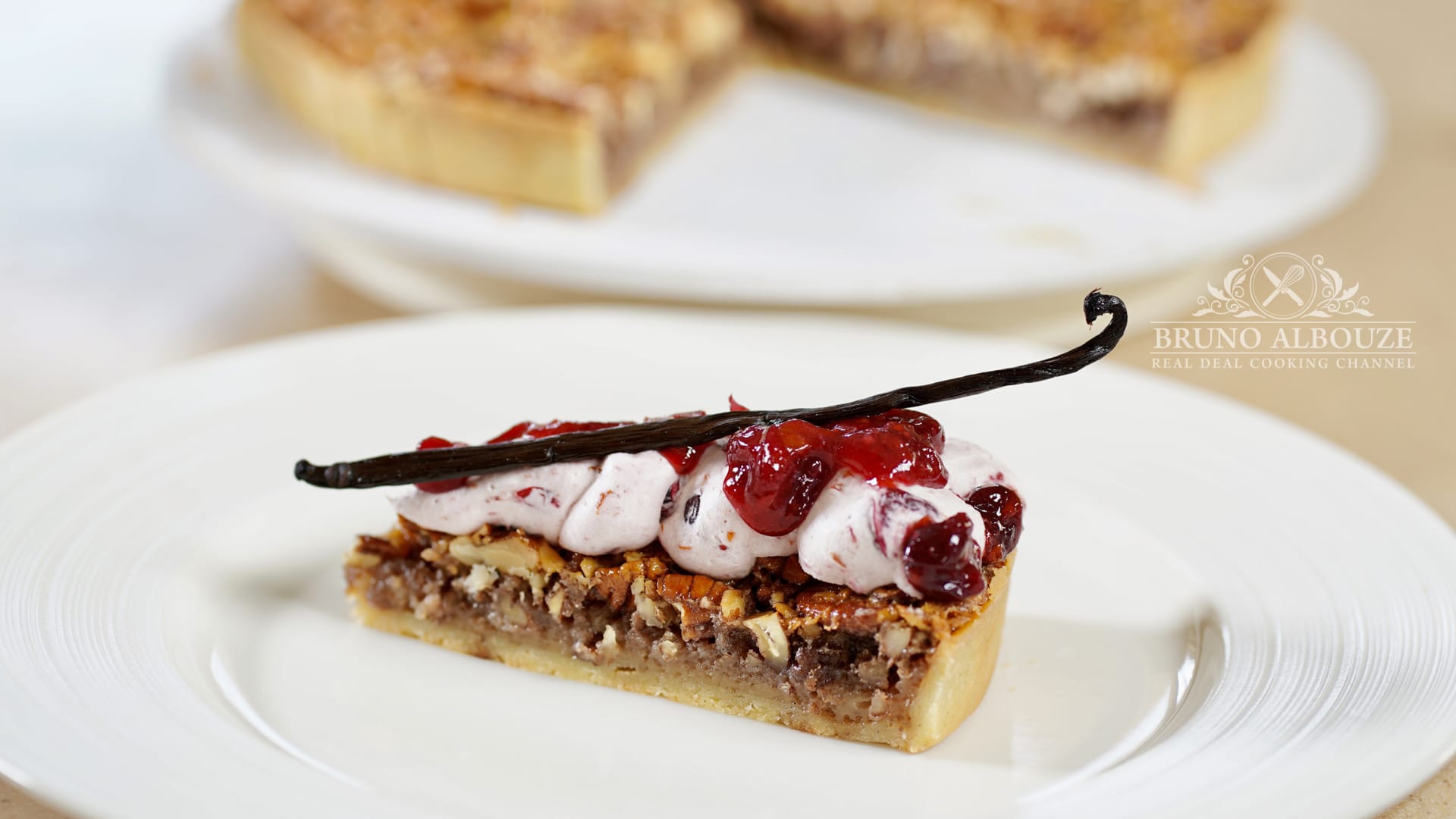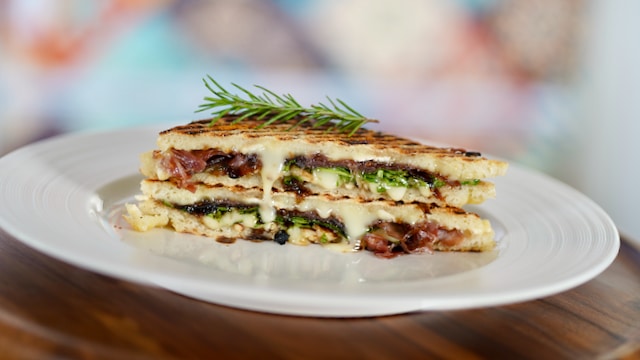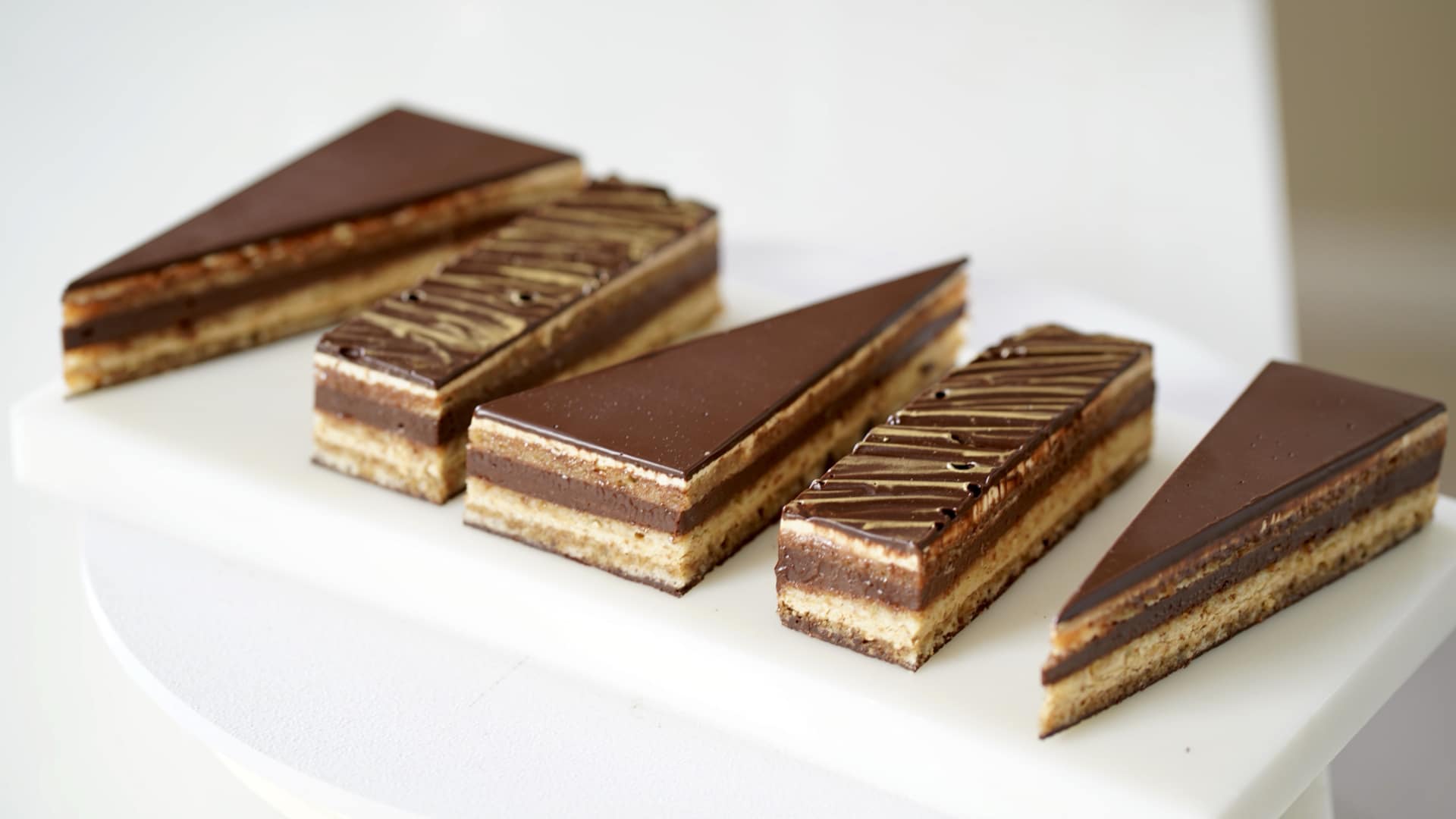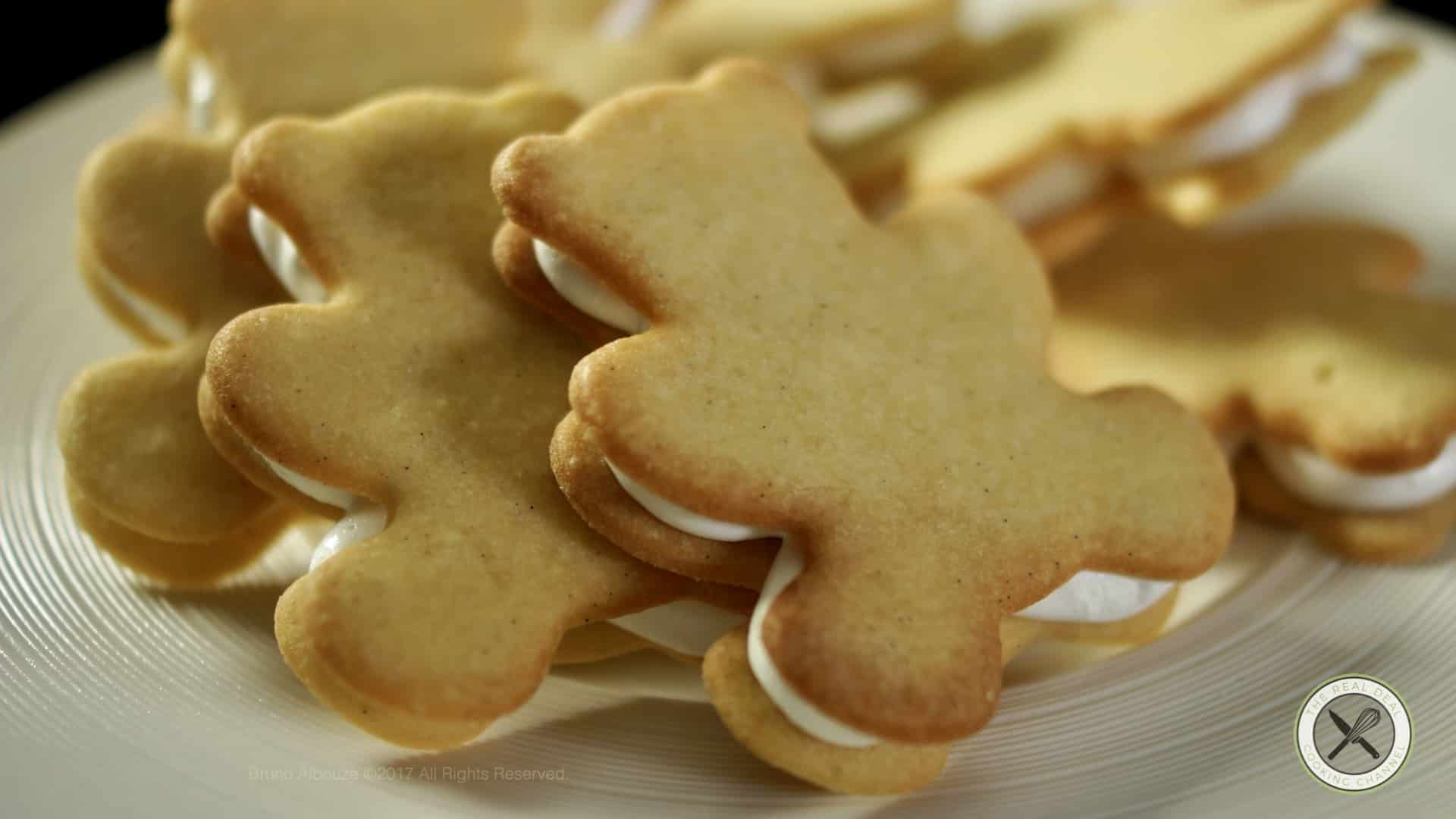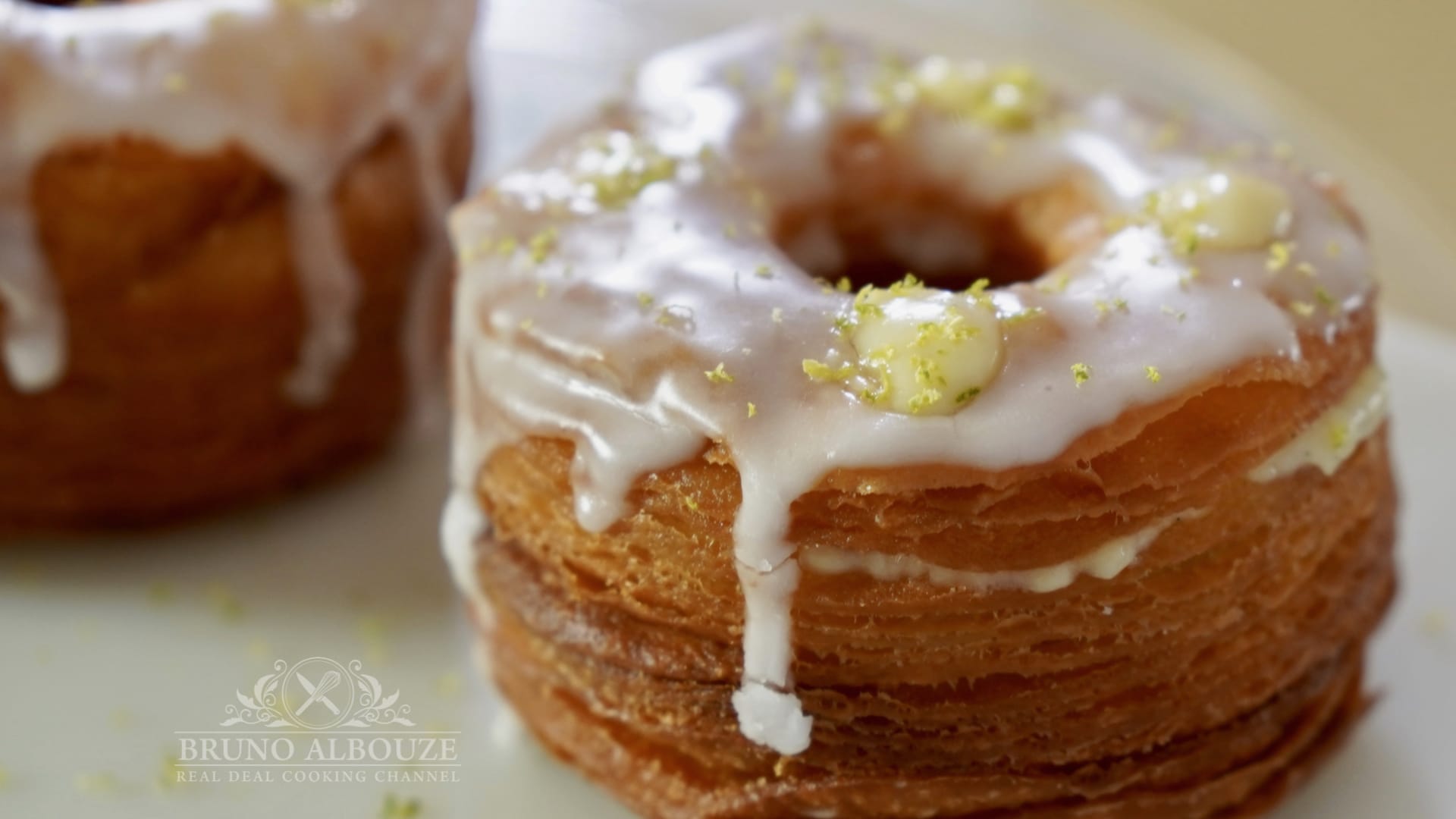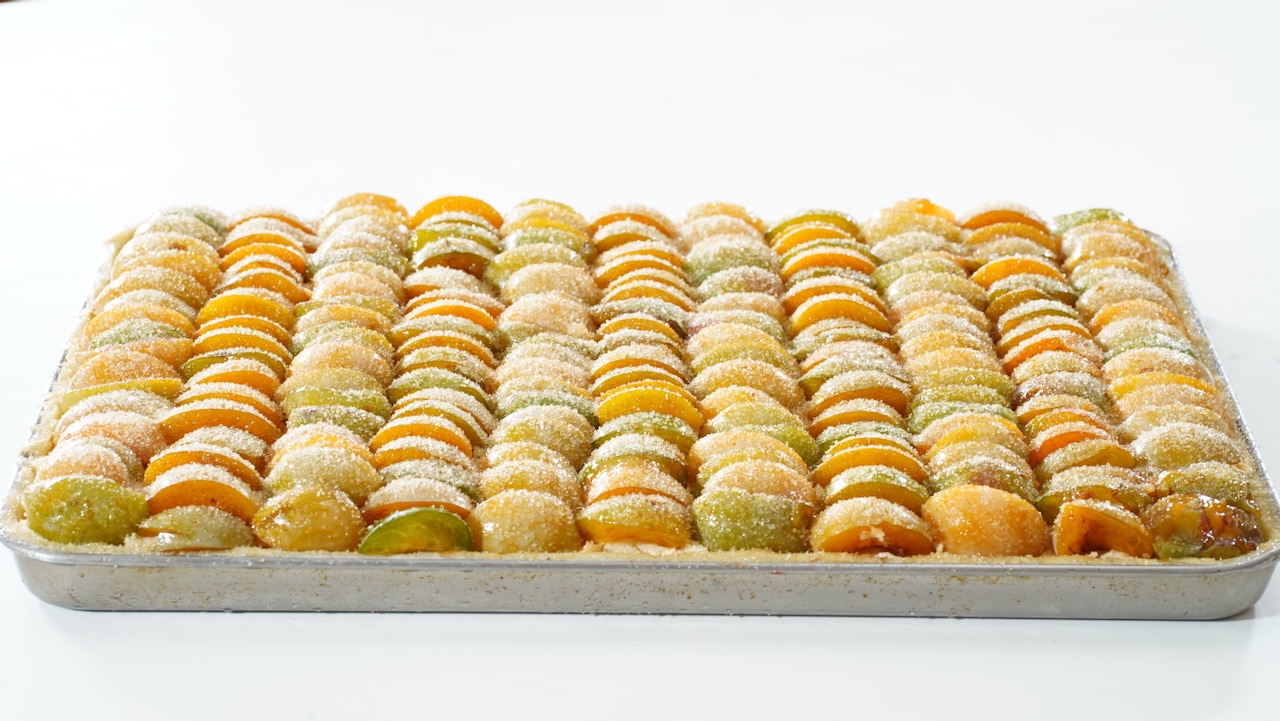Focaccia
Focaccia - A Delightful Journey Through Time and Taste Welcome to a culinary journey steeped in history and flavor with the renowned Focaccia bread. Many believe that this Italian classic has its roots with the Etruscans in North Central Italy or even further back to Ancient Greece. Known for its versatility, focaccia can be enjoyed with a wide array of toppings and is perfect for creating mouthwatering sandwiches. Enhanced with fragrant rosemary, savory thyme, and a touch of fleur de sel or flaky sea salt, focaccia tantalizes the taste buds with every bite. From olives to onions, garlic to fennel, and even a drizzle of balsamic vinegar or a sprinkle of sun-dried tomatoes, the possibilities for topping this delectable bread are endless. Whether adorned with marinated vegetables, cheese, grapes, figs, or a spread of pesto or tapenade, each variation offers a unique and delightful experience. To achieve the perfect texture and flavor, the dough for focaccia is typically 75% hydrated, resulting in a light, airy crumb and a crisp, golden crust. Join me as we explore the art of making focaccia, a timeless favorite that continues to captivate taste buds around the world. Get ready to be inspired and tempted by the irresistible allure of this classic Italian bread.
Please note that the full access to this content needs a subscription: please sign up.
Taste of Italy
This recipe is a protected and only available for paid members. To obtain the full step by step recipe and detailed ingredients list, please sign up.
Preview the recipe
What Water To Use
- Tap water is perfectly fine to use for baking bread, but you do want to make sure it’s not too hard or soft. Spring water comes from an aquifer and then flows to the earth, where it’s then bottled at the source. The natural minerals within the water are retained.

Poolish
- Poolish, also called liquid starter or biga, is a leavening method used in indirect baking. It is a pre-ferment that makes bread soft and aromatic. Poolish is a mixture of water, flour and yeast in varying proportions. Combine flour with instant yeast and add dry ingredients to the water and mix. If using fresh yeast (double the amount) and mix it in the water first – then add the flour. Cover with plastic wrap tightly and poke it. Leave mixture out for an hour and place poolish in the refrigerator overnight. You will notice that after a couple of hours of refrigeration, the poolish will begin to bubble. The fermentation will eventually slow down as the mixture gets cooler. Poolish fermentation should not exceed 20 hours.

Final Dough
- Before starting the focaccia dough, leave the poolish out for 2 hours. It allows fermentation to be reactivated. In a separate bowl, combine flour, salt and instant yeast (yet, if using fresh yeast, add it to the water first). Pour water over the bubbling poolish and let stand a minute or so. Transfer poolish to a large bowl and top with dry ingredients and slowly combine. When it comes together and gets sticky, transfer dough onto the work surface and begin to Knead. As you go, the more gluten will develop. This causes the dough to become elastic and stretchy. The total mixing time should not exceed 5 minutes. Do not add extra flour during mixing process or it will change the texture of the focaccia into an ugly way. Add olive oil and continue kneading for about 3 minutes or until fat is fully incorporated – form a ball. The internal temperature of the dough after mixing should reach 73.5ºF/79ºF (23/26ºC). Place dough in an oiled container, cover with plastic wrap and poke a hole.
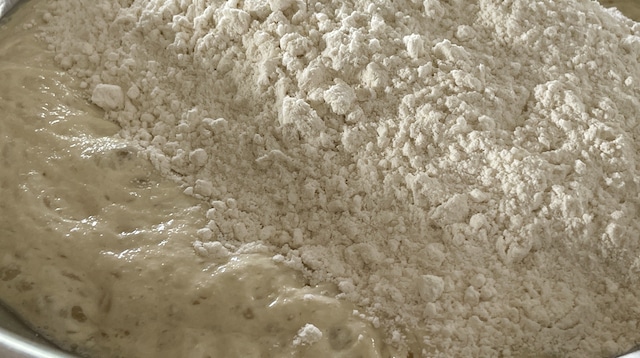
Resting
- Let rest dough for about an hour or until it has doubled in size. Note that the warmer the environment the quicker it will happen. Meanwhile, grease and line a 18X13-inch (45X33 cm) baking tray with parchment.

Shaping
- Flip dough onto the prepared baking tray; skin side down. Gently deflate and fold into a thick pillow. Flip it (skin side up) and cover dough with the saved plastic wrap previously used for the first resting. Let relax for 20 minutes and carefully stretch out dough into a perfect sheet.

Proofing
- Cover and let proof focaccia for about 60 minutes. Add a good drizzle of olive oil and use your fingers to make deep dimples in the focaccia, pushing them all the way through the dough to the bottom. Holes give focaccia its characteristic appearance, it provides little places for the olive oil and other toppings to pool and gather. Let rest again for 20 mins more before baking.
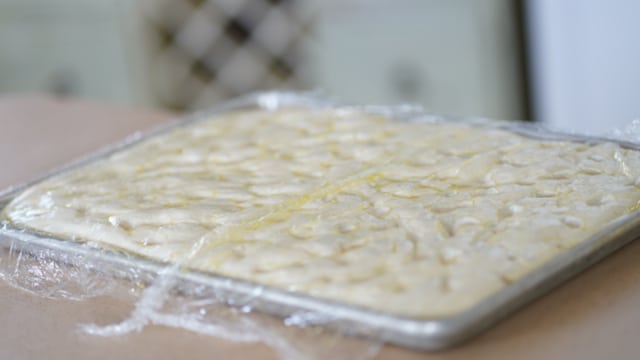
Baking
- Preheat oven on baking position with a pizza stone to 550ºF/290ºC. Bake for 14 minutes. Remove bread from the oven. Drizzle more olive oil and transfer focaccia onto a cooling rack. Cut out into desired portions – Enjoy!
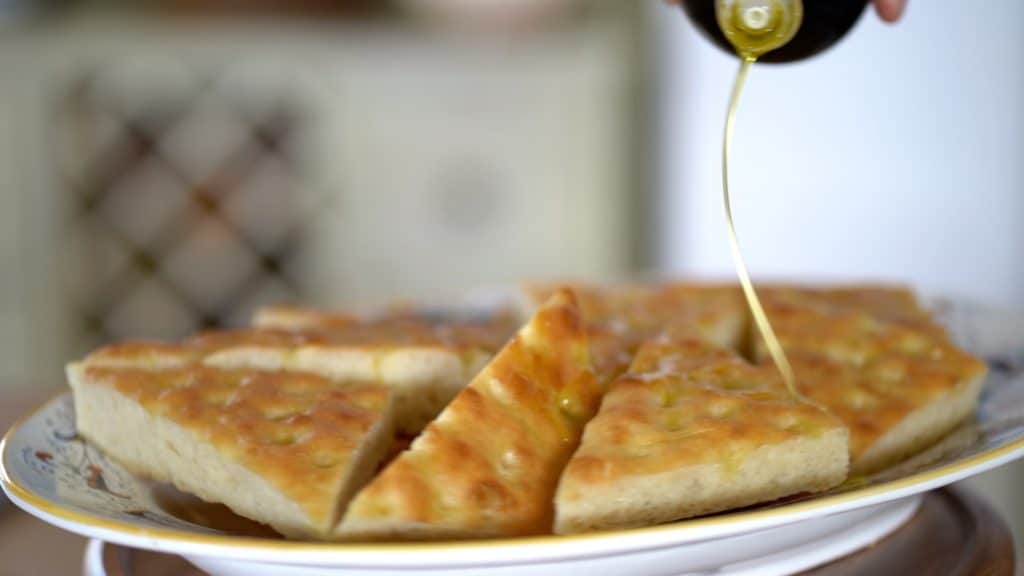
Storage
- Store bread and freezer bags, remover excess air and keep refrigerated for up to 5 days. Rewarm in a toaster or oven before eating. Focaccia can also be kept frozen for up to a month or so. Pop frozen bread in the oven for about 5 mins and leave it out for 10 mins before eating.
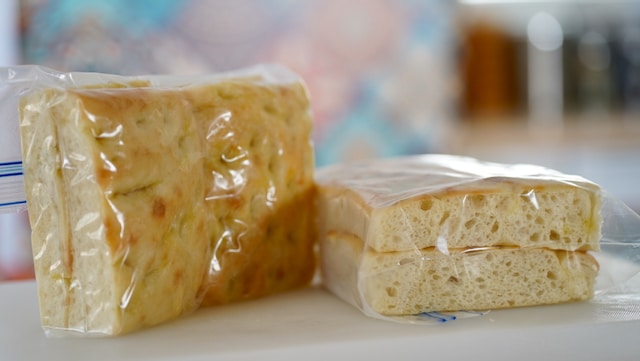
Ready to discover this recipe? You're only 1 step away.
This recipe is only accessible to registered members!
Create your account to access all recipes and content of my website.
Join us now and enjoy more 800 recipes (Mostly French with European Influences, American Classics and Asian fusion)
Already register? Sign in
Want to see more tasty recipes?
The kitchen is an incredible playground where every ingredient, every recipe, every flavor, is both a destination and a path to new discoveries. I always strive to introduce you to new taste horizons through my recipes. Did you enjoy this one? If so:You ‘ll enjoy the Stollen recipe.You might also like these contents...
Enjoy these free access recipes
Breakfast
Cronut
Entrees
How To Cut Potato Gratin
Cooking techniques
Deboning A Turkey Leg
Entrees
Rustic Ratatouille
Daily summer Recipe
Plum Slab Pie
Free Recipes
Chocolate Sauce
Free Recipes
Apricot Sablé Breton
Desserts
Sundae Ice Cream
Free Recipes
How To Decorate Ice Cream Cones
Free Recipes
Tapenade
Amuse Bouche
Zucchini-Basil Gazpacho
Free Recipes


